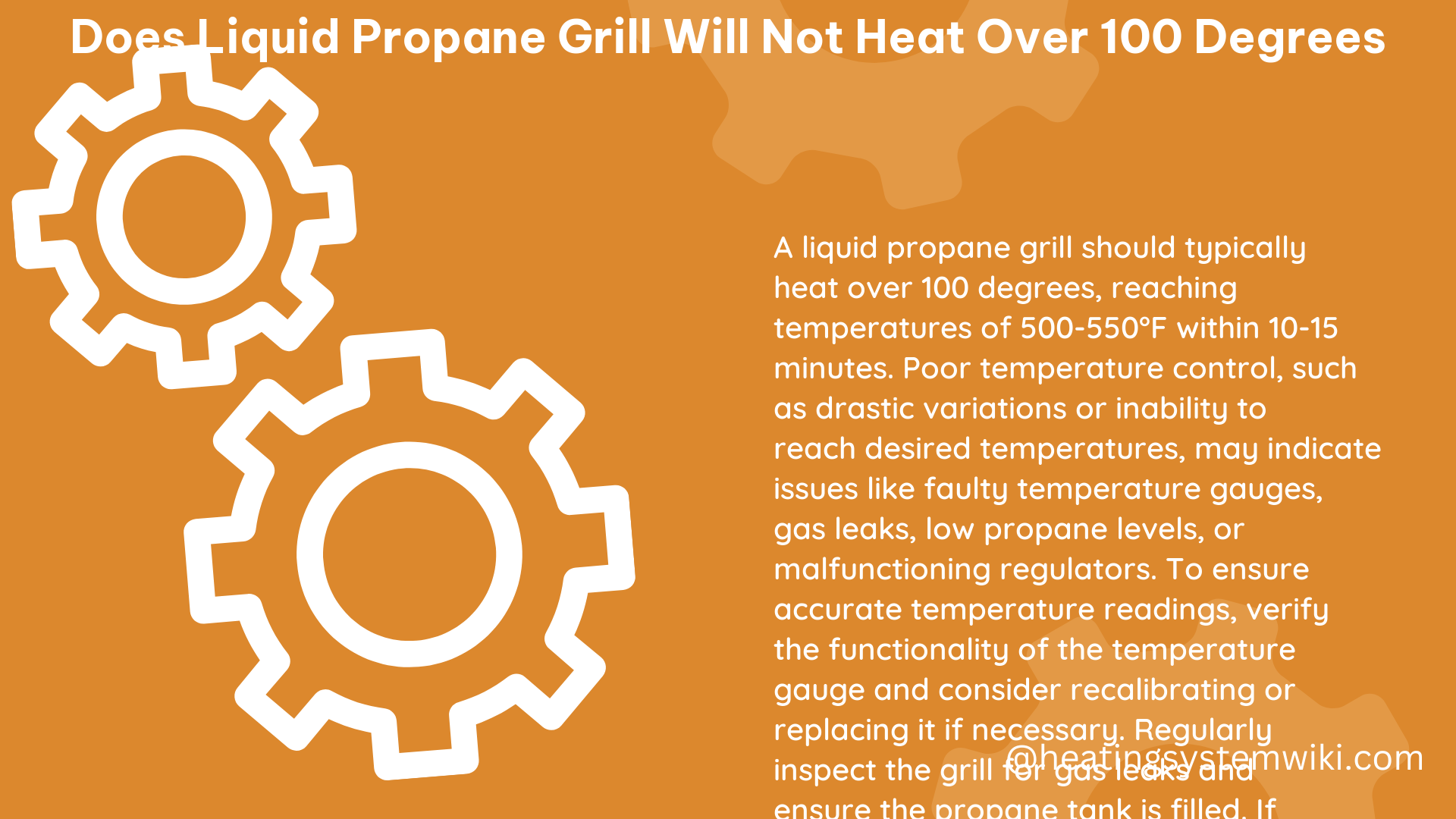If your liquid propane grill is struggling to reach temperatures above 100 degrees Fahrenheit, you’re not alone. This is a common issue that many grill owners face, and it can be frustrating to try and figure out the root cause. Fortunately, the search results provide valuable insights into the potential reasons behind this problem and the steps you can take to resolve it.
Understanding the Bypass Mode
The primary reason a liquid propane grill may not heat above 100 degrees is due to a safety device in the regulator hose designed to detect gas leaks. This safety device is known as the “bypass mode,” and it’s triggered when the grill isn’t lit in a specific way. When the bypass mode is activated, the safety device reduces the gas flow to about 10% or less, making it impossible for the grill to reach its normal temperature range.
Performing a Gas Leak Test

To resolve this issue, the first step is to perform a gas leak test. This is a crucial step, as it will help you determine whether there is a gas leak in the system. If a gas leak is detected, it’s essential to address it before attempting to use the grill again.
To perform a gas leak test, follow these steps:
- Mix a solution of soap and water.
- Apply the solution to the regulator, hose, and all connections.
- Turn on the gas supply and observe the solution for any bubbles, which would indicate a gas leak.
- If a leak is detected, turn off the gas supply immediately and repair the leak before using the grill.
Avoiding the Bypass Mode
If no gas leak is found, the next step is to follow specific steps to avoid going into bypass mode. This includes:
- Waiting for the pressure to build up in the hose before turning a control knob to light the grill.
- Ensuring the lid is open and all control knobs are in the OFF position before turning on the gas supply.
- Lighting the grill according to the manufacturer’s instructions, which may involve pressing and holding the igniter button for a few seconds before turning the control knob.
Benchmarking Grill Temperature Performance
The search results provide quantifiable details about the expected temperature range for a properly functioning gas grill. Most gas grills should be able to heat up to 500-550 degrees Fahrenheit in about 10-15 minutes. If your grill is consistently failing to reach this temperature range, it may indicate a more serious issue that requires further troubleshooting or professional assistance.
Potential Causes of Low Grill Temperatures
In addition to the bypass mode issue, there are several other potential causes for a liquid propane grill not heating above 100 degrees:
- Clogged Burners: Over time, the burners on a gas grill can become clogged with grease, debris, or spider webs, which can restrict the gas flow and prevent the grill from reaching the desired temperature.
- Faulty Regulator: The regulator is responsible for controlling the gas flow to the grill. If the regulator is malfunctioning, it can cause the grill to receive an insufficient amount of gas, resulting in low temperatures.
- Insufficient Propane Supply: If the propane tank is low or nearly empty, the grill may not receive enough fuel to reach the desired temperature.
- Ambient Temperature Conditions: Extremely cold or windy weather can also impact the grill’s ability to reach and maintain high temperatures.
Troubleshooting Steps
If you’ve followed the steps to avoid the bypass mode and the grill still isn’t heating up properly, consider the following troubleshooting steps:
- Check the burners for any blockages or debris and clean them thoroughly.
- Inspect the regulator and hose for any signs of damage or wear and replace them if necessary.
- Ensure the propane tank is full and that the connections are tight and secure.
- Consider the ambient temperature and wind conditions, and adjust your grilling strategy accordingly.
By following these steps and understanding the potential causes of low grill temperatures, you’ll be well on your way to resolving the issue and enjoying your liquid propane grill to its full potential.
